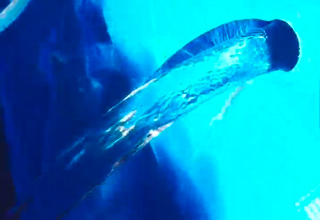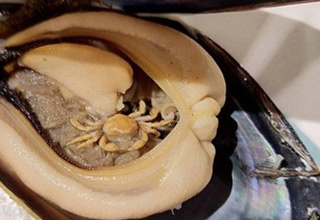
Zombies as seen in George A. Romero’s 1968 film, Night of the Living Dead
Whether you’ve sought them out or not, zombies have probably crawled and dragged their way into your life in some form or another — whether it be via a popular movie, an incredibly long-running TV series and its various spin-offs, a beloved video game franchise or a sequence of increasingly horrifying nightmares.
While many of us have gleaned the majority of our zombie knowledge from pop culture, others have been raised in cultures that incorporate zombies — or creatures strikingly similar to zombies — in their mythologies and folklore. Zombies only really entered the Western cultural consciousness in the second half of the 20th century thanks to movies like 1968’s Night of the Living Dead, but the idea of the deceased coming back to life dates back millennia and spans several continents.

Victor Halperin’s 1932 film White Zombie borrowed heavily from Haitian Vodou for its depiction of zombies.
But what exactly is a zombie?
Despite seeming like an obvious question, different cultures tackle it in different ways. One popular understanding is that zombies are corpses that have been reanimated, usually for nefarious intent; some are reanimated by magicians, like in the first-ever zombie film, 1932’s White Zombie, while others have been killed and reanimated by a virus that’s using their bodies as a host, like in The Walking Dead or The Last of Us. In her book on Vodou, Zora Neale Hurston shared her understanding of zombies: “They are bodies without souls. The living dead. Once they were dead, and after that, they were called back to life again.”
One characteristic that’s fairly consistent across cultures is that zombies are lower life forms: They aren’t capable of speech or rational thought, and are driven entirely by their instincts to feed and further spread their affliction.
Whichever version of zombies are giving you the creeps, it’s impossible to talk about them without going back to where it all began, and that requires a trip to the Caribbean.
Haiti
The way we think about zombies now draws most, if not all, of its inspiration from Haiti, specifically Vodou, the religion that developed on the island during the transatlantic slave trade.

The Zombies by Hector Hyppolite, found in the Museum of Haitian Art of St. Peter College
Many Haitians practice Vodou — estimates suggest over 80 percent “serve the spirits,” while one popular saying claims Haiti is “70 percent Catholic, 30 percent Protestant and 100 percent Vodou” — and believe that people die in one of two ways: naturally, via sickness or the will of the gods, or unnaturally, like those who are murdered or otherwise die before their time. Those who die unnatural deaths linger, unable to join their ancestors until the gods approve. It’s during this period of limbo that souls are vulnerable to being stolen by a sorcerer, who can then trap them in a bottle and control their simultaneously not-fully-dead-yet-not-fully-alive body.
While many Haitians believe in Vodou, not all believe in zombies or sorcerers; many view them as folktales, others see them as a metaphor for a hard life without reward or a loss of control or faith. In addition, many have highlighted the parallels between zombies — humans with a lack of free will controlled by a malevolent master — and slavery, explaining that slaveowners used this fear of being deprived of free will even in death to discourage suicide amongst their workforces.
Enslaved people believed that dying would release them into lan guinée (literally Guinea, generally Africa as a stand-in for the afterlife) where they were finally free; being turned into zombies would deprive them of their freedom even in death.

Wilson Bigaud’s 1953 painting, Zombies
Haiti’s influence on zombies in popular culture came about as a result of William Seabrook’s 1929 novel The Magic Island and its 1932 film adaptation directed by Victor Halperin, White Zombie, widely considered the first feature-length zombie film. The story was described by Roger Luckhurst as a “rewrite of Dracula set in a hallucinated Caribbean,” and Halperin even went so far as to cast Bela Lugosi, who found fame playing Dracula a year prior, as the evil zombie master Murder Legendre.
Legendre learned all he knew from a witch doctor, eventually becoming a vodou master himself and turning his enemies into zombies he then made to work as slaves in his sugar mill. Despite the mixed critical response and box office reception, the film would go on to influence countless other depictions of zombies in popular culture, including several films made throughout the 1940s, and even served as the inspiration for Rob Zombie’s stage name.
Many people across the Caribbean believe in the existence of jumbees, malevolent spirits who are used as instruments of evil. Although sometimes confused with zombies — the similar-sounding names probably don’t help — jumbees are primarily incorporeal.
But although both the modern image of zombies and the word “zombie” itself came to us via Haiti and Vodou, we have to go back to Africa to unravel the etymology of the word itself.

This portrait, given to LIFE Magazine by author Zora Neale Hurston and published in 1937, is considered the first published photograph of a Haitian zombie. [source]
Kongo
In Kongo spirituality, “nzambi” means “soul” or “spirit,” and is also the name of the Creator God of the world, Nzambi Mpungu. When practitioners of this religion were sold into slavery and transported to the New World, they brought their cultural practices with them. In Haiti, Kongo spirituality was combined with practices from other parts of West and Central Africa to create Vodou, a religion unique to their new home, with the word “nzambi” taking on new meaning to reflect its new context.
Elsewhere in Africa, other cultural traditions feature zombie-like creatures that also may have influenced the beliefs of enslaved people in Haiti.

Hlubi Mboya in the 2019 South African short zombie comedy, Life’s A Drag
South Africa
Speakers of Sotho or Tsonga might know them asxidachane, while speakers of Venda might call them maduxwane. Whatever their name, they’re undead, zombie-like creatures, whose spell can be broken by a sufficiently powerful sangoma, or traditional healer. Some believe that these zombies are created by small children; others believe it’s the work of witches hoping to force their victims to perform physical labor. Despite the fear of being enslaved even in death being similar to that of Haitians’, the myth didn’t come about until railway lines were being built, leading to rumors of “witch trains” manned by zombified workers controlled by a witch.
Going even further back through time, we can see that a fear of the undead rising again can be found in human civilizations across the globe, including many ancient cultures. These cultures lacked the context of slavery that influenced the fears of those in Haiti and across Africa, but fears of witches resurrecting the dead for their own ends can still be found, as well as the persistent threat of restless spirits unable to pass on.
Ancient Mesopotamia and Greece
The Epic of Gilgamesh, a poem from ancient Mesopotamia thought to have been written sometime between 2100 and 1200 B.C., has been credited by some as the first recorded mention of “the undead” in human history.
In the poem, Ishtar threatens: “I will raise up the dead, and they will devour the living / I will make the dead outnumber the living!” While this does indeed sound like a pretty clear threat to create a zombie army, one researcher argues that it only sounds like that because modern audiences lack the necessary context.
Instead, the Queen of the Dead who originally uttered those lines as a curse in an older poem was a queen of cold, lonely souls described as being “clothed, like a bird, with feathered raiment” and subsisting on clay. Mesopotamians generally believed in ghosts, rather than zombies, meaning that their “undead” would lack the physical form we associate with zombies.

A flexed burial from Passo Marinaro, courtesy of the Regional Museum of Kamarina. Bodies buried in this position would then be pinned down in order to prevent them rising after death. [source]
Further west in Ancient Greece, however, people were concerned enough about the dead rising from their graves that they would pin bodies down with millstones, trapping them for eternity; such gravesites have been found in Cyprus, Greece and Sicily.
Greeks believed that a person could become a vrykolakas after dying in a sacrilegious fashion, being excommunicated, being buried in unconsecrated ground, or, unusually, eating the meat of a sheep that had been wounded by a wolf or werewolf. Unlike modern zombies, vrykolakes swell instead of decay, and are more likely to increase in size and look “fresh and gorged with new blood” (once again, zombie folklore overlaps with vampire mythology). With both being different forms of undead human — one non-verbal, one known for seducing victims with their words — their places in our minds are permanently intertwined, and have been for eons.
In classical antiquity and mythology from across Greece, Rome and Egypt, people would raise others from the dead in order to answer questions or provide prophecies to the living, because throughout Greco-Roman literature, the dead are believed to have special knowledge of the future, despite not living long enough to see it themselves.
Zombies can be found in folklore across Europe as well, so let’s take a look at how the undead have been depicted in several other European countries throughout history.

A draugr deathlord from The Elder Scrolls V: Skyrim.
Medieval Europe
Gamers may already be familiar with one of the best-known examples of zombies in European folklore, draugrs, thanks to games like Skyrim, which are composed of seemingly endless dungeons where you’re forced to fight these reanimated Nordic warriors off in order to claim your treasure (and Dragon Shout) at the end.

A barrow-wight as seen in Amazon’s ‘The Rings of Power’ TV series
Draugrs appear in the folktales of all Scandinavian countries: Sweden, Norway, Denmark, Iceland and the Faroe Islands, and live in their graves, often guarding treasure. It’s likely that J.R.R. Tolkien was inspired by draugrs when he wrote about the barrow-wights that trapped the four hobbits in their barrows, although Tolkien’s barrow-wights lacked a physical form, making them more similar to ghosts than reanimated undead.

The drowned man's ghost [gjenganger] tries to claim a new victim for the sea, Thorvald Niss, Skagens Museum
Gjengangers, also found in Scandinavian folklore, are the reanimated corpses of those who have taken their own lives, have been murdered or who are murderers themselves. They can be motivated by anything ranging from a desire to finally rest to simply wanting to spread disease.

Revenants as seen in The Old Woman (The Dance of Death) by Hans Lützelberger, found in the Whitworth Bestiary [source]
In addition to draugrs and gjengangers, revenants appear throughout Celtic and Norse mythology. Although many experts view the term as synonymous with “ghost,” others argue that it’s a generic term for all undead creatures, and doesn’t necessarily describe a spirit that lacks a body. Whether they’re corporeal or not, revenants primarily exist to haunt or torment the living, and a fear of them drove many ancient Europeans to pin bodies down in their graves to prevent them from reanimating, similarly to the ancient Greeks.
In Germany, nachzehrers are a type of revenant who feed on both dead bodies as well as the life force of living humans, and who are capable of dragging the living into death behind them. In Romania, strigoi are uneasy spirits who have risen from the grave and are able to transform into animals, become invisible and gain sustenance from drinking the blood of their victims. Many have suggested that Bram Stoker’s Dracula was a modern interpretation of strigoi.
Korea
It feels impossible to talk about zombies and Korea without mentioning Train to Busan, the iconic 2016 film directed by Yeon Sang-ho set on a train traveling from Seoul to Busan when a zombie apocalypse breaks out. The creative team behind the film drew inspiration from video games like 7 Days to Die and Silent Hill, as well as Ghost in the Shell, and the film has since spawned an entire franchise, including an animated prequel, a standalone sequel and a potential American adaptation.
The image of the undead gangshi also exists in Korean culture, although it’s perhaps better known by its Chinese name, jiangshi.
China
The jiangshi is a reanimated corpse that’s often depicted in clothing from the Qing dynasty, thanks to the success of a subgenre of jiangshi movies made in Hong Kong that showed the creatures wearing traditional changshan clothing.

A still from one of the earliest Hong Kong films featuring a jiangshi, 1936’s Midnight Vampire
Jiangshi are often shown to be hopping or leaping, although in folklore they’re capable of running, and even occasionally, flight. The janky movements and the fact the name literally translates to “stiff corpse” suggests similarities with zombies, as well as the fact they typically eat people, sometimes occasionally absorbing their life force as well. There are also similarities with vampires, however: They avoid the daylight, resting in a coffin or hiding in dark caves when it’s sunny outside, and their archaic garments convey the impression of creatures out of their own time, much like vampires.
Japan
Another staple in our popular understanding of zombies comes by way of Japan, namely the Resident Evil video game series and subsequent media franchise. Beginning with the first game in 1996, the series went on to become a global sensation, leading to several follow-up games, a live-action film series, comic books, novels, animated movies and a Netflix series. As a result, Resident Evil is now the highest-grossing horror franchise of all time.

Jiangshi in Shibuya by Dick Thomas Johnson [source]
In the series, zombies are the result of the Umbrella Corporation’s viruses that transform humans into mindless zombies, allowing them to control Raccoon City, a fictional Midwestern town. The zombies in the series are similar to our current popular understanding of zombies: mindless reanimated corpses driven entirely by instinct to kill and consume any uninfected creatures that they find, moaning and grunting because they’re incapable of speech.

Searching the Seas with the Tenkei, by Kobayashi Eitaku, 1880-90. Izanami is on the left, with Izanagi holding the spear Amenonuhoko to the right.
Japanese mythology also features at least one undead character, that of Izanami, who died during childbirth. Her grieving husband Izanagi killed the child and visited the underworld to be reunited with his wife, only to discover she was now an undead, rotting corpse. Horrified, he fled, sealing the entrance with a giant rock. Izanami then became the goddess of death, vowing to kill 1,000 people every day; Izangi vowed to create 1,500 a day in response.
The United States
America is, to put it bluntly, pretty obsessed with zombies — again, an obsession that can be traced back to George A. Romero’s Night of the Living Dead, which popularized zombies in American culture and spawned countless imitations. But Romero didn’t create the film out of whole cloth. The script drew inspiration from Richard Matheson’s novel I Am Legend — yes, like the movie starring Will Smith.

Sam Raimi’s directorial feature-length debut The Evil Dead has since become a cult classic and a staple of the zombie genre
After this, zombies became a fixture of the horror genre, appearing in several more Romero movies as well as other franchises like Sam Raimi’s The Evil Dead series and The Walking Dead. Not content with taking over our movie theaters and TV screens, zombies also made their way onto our computers and video game consoles thanks to games like Dead Rising, The Last of Us and Japan’s Resident Evil.
Scholars have sought to understand why Americans in particular seem captivated by zombies. Author Peter Dendle suggests that “the zombie can be read as tracking a wide range of cultural, political and economic anxieties of American society,” as zombies increased in popularity across decades marked by continuing environmental degradation, political conflict and late-stage capitalism.
There’s undoubtedly something to that, but the proliferation of these fears of the undead rising from their graves to haunt, terrorize or otherwise confront humans that has taken place across centuries and countless cultures across the world suggests there’s something more primal and ancient about our obsession with zombies: Once someone is dead, we really, really, really want them to stay that way.
That, and people really love speculating about how long they would survive in a post-apocalyptic zombie scenario.






1 Comments